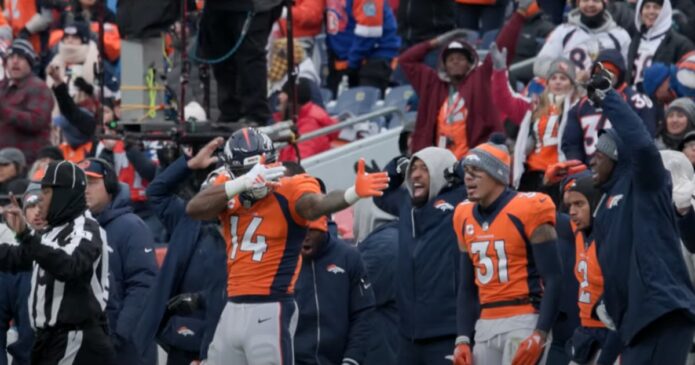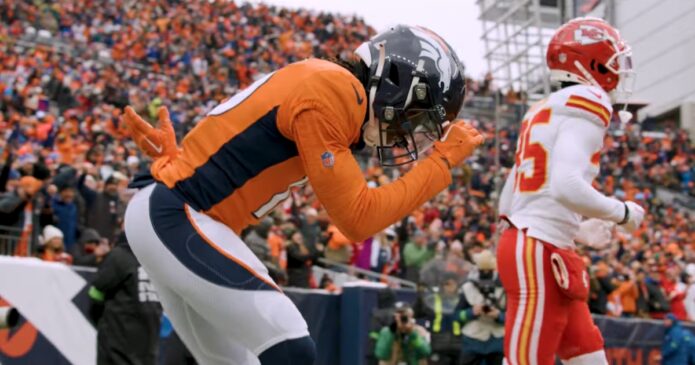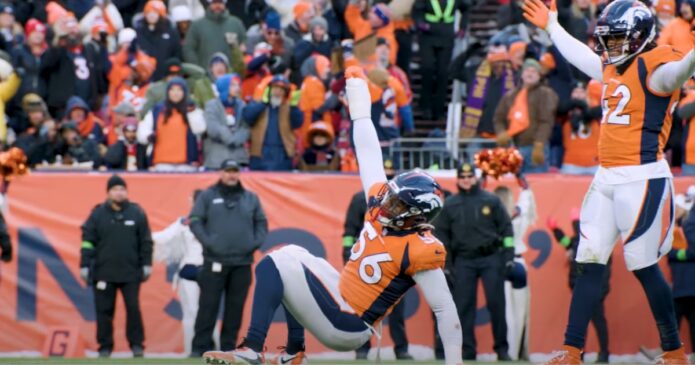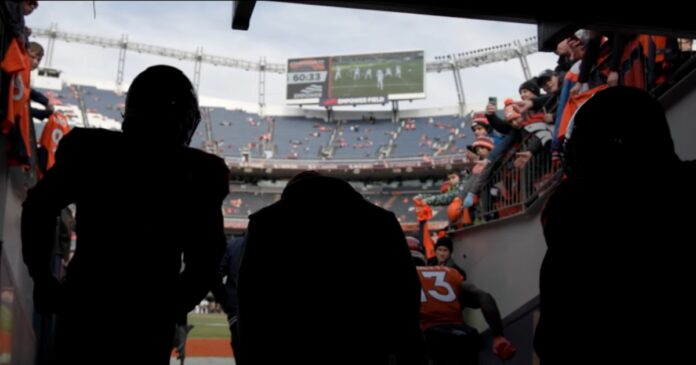The Denver Broncos set the stage to move on from quarterback Russell Wilson after their 2024 season, benching him for the final two games to preserve the financial flexibility to get out of his contract if need be.
The 35-year-old signal caller signed a five-year extension worth $245 million—with $165 million of that guaranteed—when the Broncos acquired him in March 2022.
Why Do the Broncos Need a Quarterback?

Wilson’s contract included an injury clause that would guarantee another $37 million for him if he were to suffer an injury bad enough to prevent him from passing a physical when the new league year begins in March 2024, so the Broncos held him out of the last two games, even though they still had a chance at making the playoffs so that they wouldn’t get stuck with Wilson long term.
While it may be a better option than overpaying for him, moving on from Wilson won’t be easy either. He turned in a fine second season in Denver, throwing 26 touchdowns to just eight interceptions across 15 games, but one can argue that that’s still not the level of production you want out of a man costing close to a quarter of a billion dollars.
The Broncos will still need to find a willing trade partner, as they’d have to eat most of his dead money if they cut him, which makes matters more difficult. With his albatross of a contract, teams may not be willing to take on that sort of risk: worst case scenario, the Broncos will have to pay another team to acquire him, shipping valuable picks alongside him to sweeten the deal.
Even if they choose to retain him on the roster, there’s a chance that Wilson might opt to leave the team, citing dissatisfaction with how he’s being treated. According to Rotowire.com and ESPN BET Colorado, there’s a notable betting prediction supported by promo codes, suggesting that a new starting quarterback will helm the Denver team at the commencement of the 2024 season.
The anticipation prompts a closer examination of potential candidates for this role.
Draft Day Considerations: Michael Penix Jr. and the Broncos’ Quarterback Dilemma

As the Denver Broncos eye the No. 12 overall pick in the upcoming 2024 NFL Draft, the looming question is whether they can secure a top-tier quarterback like Drake Maye or Caleb Williams without resorting to another high-stakes trade. While their draft position is solid, the reality is that the quarterback talent pool may thin out considerably before their selection.
Nonetheless, with offensive-minded head coach Sean Payton at the helm, the Broncos are exploring various quarterback options lower down the draft board. One intriguing prospect on their radar is Michael Penix Jr., the leader who propelled the Washington Huskies to a national championship game just a month ago.
Penix’s emergence as a legitimate NFL talent garnered attention during the Sugar Bowl showdown against Texas, where he showcased his prowess with an impressive 430 passing yards and two touchdowns.
What sets him apart is not just his on-field performance but also his uniqueness as a left-handed quarterback—an uncommon sight in the NFL. The debates surrounding Penix’s unorthodox throwing motion raise questions about whether it’s a genuine red flag or merely a consequence of the unfamiliarity with southpaw quarterbacks.
In the best-case scenario, Penix draws comparisons to players like Matthew Stafford, boasting exceptional arm strength and subtle athleticism.
Unlike some mobile quarterbacks, Penix doesn’t aim to break the pocket and run but rather relies on his arm to pick up significant yardage. Nevertheless, he possesses the capability to use his legs when the situation demands.
At 24 years old when the next season kicks off, Penix’s age might be a concern, particularly as he works to refine certain mechanical aspects of his game. However, the later rounds of the draft seldom yield polished players, and the Broncos may view Penix as a prospect with untapped potential, willing to invest in his development.
As the draft day approaches, the Broncos face a critical decision—whether to take a calculated gamble on Michael Penix Jr., a quarterback with unique traits and the potential to surprise or explore other options in their quest for a franchise signal-caller.
Salvaging Spencer Rattler: A Tale of Redemption and Potential

Spencer Rattler’s journey through college football has been nothing short of a rollercoaster ride. Initially hailed as the successor to Jalen Hurts in Lincoln Riley’s high-octane offense at Oklahoma, Rattler’s career took an unexpected turn when he lost the starting role to Caleb Williams, leading to his eventual transfer to South Carolina.
The narrative surrounding Rattler has been one of immense promise marred by maturity issues, a storyline that gained attention during his high school days as depicted in the Netflix documentary “QB1.” However, it’s essential to recognize the inherent challenges of navigating adolescence with the sudden influx of fame.
Recent reports suggest that Rattler has undergone significant personal growth during his tenure at South Carolina, signaling a newfound maturity that bodes well for his future.
Despite standing at a slightly undersized 6-foot-1 for a professional quarterback, Rattler possesses a remarkable arm, showcasing both throwing power and accuracy. His athleticism further adds a dynamic dimension to his game, enabling him to extend plays and deliver on-the-run throws.
While he has been prone to occasional questionable decision-making, the natural talent he brings to the quarterback position is enough to ignite excitement among Broncos fans should they choose to draft him.
Rattler’s unconventional path to the NFL might just be the crucible he needed to temper his character and foster personal development. The challenges faced particularly the setback at Oklahoma and subsequent transfer, could have played a crucial role in shaping Rattler into a more composed and focused athlete.
As he embarks on his professional journey, the hope is that the hard work invested in his personal and athletic growth will translate into a successful and fulfilling career in the NFL.

